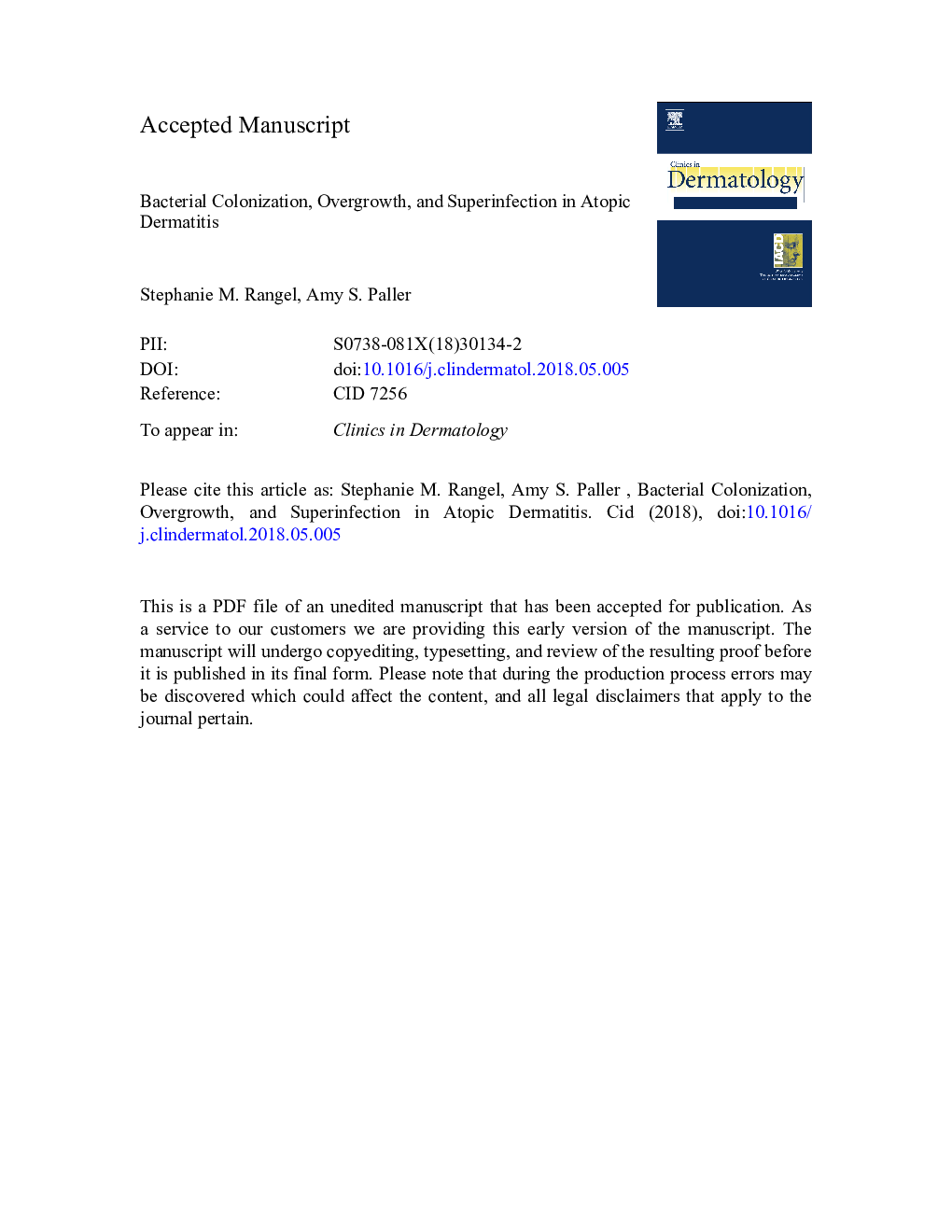| Article ID | Journal | Published Year | Pages | File Type |
|---|---|---|---|---|
| 10216680 | Clinics in Dermatology | 2018 | 23 Pages |
Abstract
Staphylococcus aureus infection is a major burden for individuals with moderate-to-severe atopic dermatitis and a known inducer of disease exacerbation. This increased susceptibility to staphylococcal infections has been attributed to abnormalities in the innate immune system of atopic dermatitis (AD) skin, including deficits in barrier proteins and lipids, and a muted response in generating antimicrobial peptides, all of which is further impaired by the activation of Th2 and Th22 immune pathways, which characterizes AD. Skewing of the immune response with a reduced Th1:Th2 ratio and increased adherence of bacteria to AD skin are also thought to contribute. Bacterial species diversity is reduced with flares, concomitant with increases in S. aureus and sometimes clinical infection, which has recently been linked to the finding that commensal bacteria produce anti-S. aureus factors that contribute to the endogenous response. S. aureus produces several virulence factors affecting the skin barrier and immune system, including promoting Th2 cell activation. Best practices for the management of staphylococcal infections include systemic antibiotics, initiation of antiseptics (particularly dilute bleach baths), and sometimes periodic intranasal mupirocin. Newer evidence suggests the possibility that treatment of the skin with commensal bacterial species could also reduce S. aureus growth and increase diversity.
Related Topics
Health Sciences
Medicine and Dentistry
Dermatology
Authors
Stephanie M. PhD, Amy S. MD,
